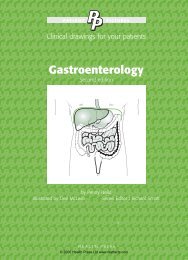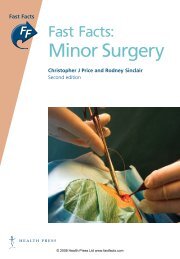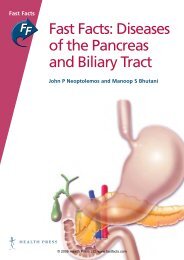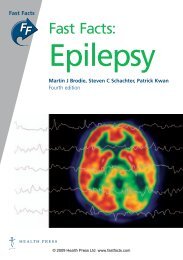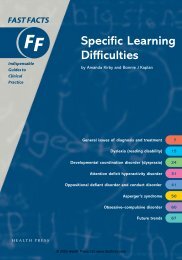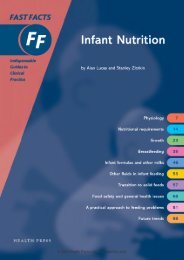PP Ophthalmology Page Print - Fast Facts
PP Ophthalmology Page Print - Fast Facts
PP Ophthalmology Page Print - Fast Facts
Create successful ePaper yourself
Turn your PDF publications into a flip-book with our unique Google optimized e-Paper software.
The eye and eyelid<br />
• The eye works in a similar way to a camera. Light enters<br />
the eye and is focused onto the retina, the light-sensitive<br />
surface at the back of the eye.<br />
• The clear window at the front of the eye is the cornea,<br />
which provides coarse focusing power. A lens lies behind<br />
the iris, the coloured part of the eye, and does the fine<br />
focusing. Muscles attached to the lens can change its<br />
shape, so light can be focused when looking at close<br />
or distant objects.<br />
• The pupil is the black hole in the middle of the iris. Its<br />
size can change to control the amount of light reaching<br />
the retina, like the aperture in a camera. In dim light,<br />
the pupil gets wider to let more light into the eye, and<br />
in bright light it gets smaller to reduce the amount of<br />
light entering.<br />
• The retina changes the image of the outside world into<br />
electrical impulses, which travel to the brain along the<br />
optic nerve.<br />
• The eyelids protect and clean the front of the eye. The<br />
upper eyelid blinks and washes tears over the surface of<br />
the eye. Tears are formed by glands around the eye and<br />
in the eyelids. Tears drain out of the eyes and into the<br />
nose through channels called tear ducts.<br />
• Muscles attached to the surface of the eyes allow them<br />
to move exactly together. Both eyes are protected by the<br />
orbital bone, except at the front.<br />
© 2001 Health Press Ltd



